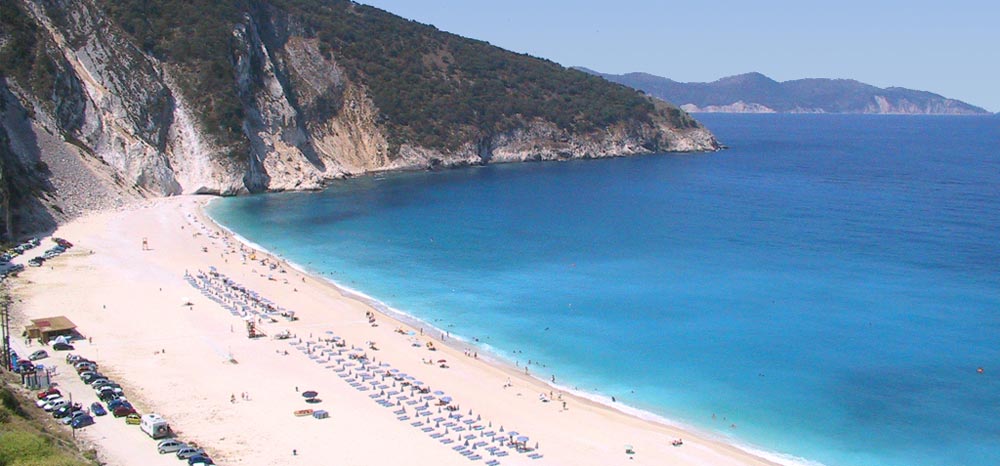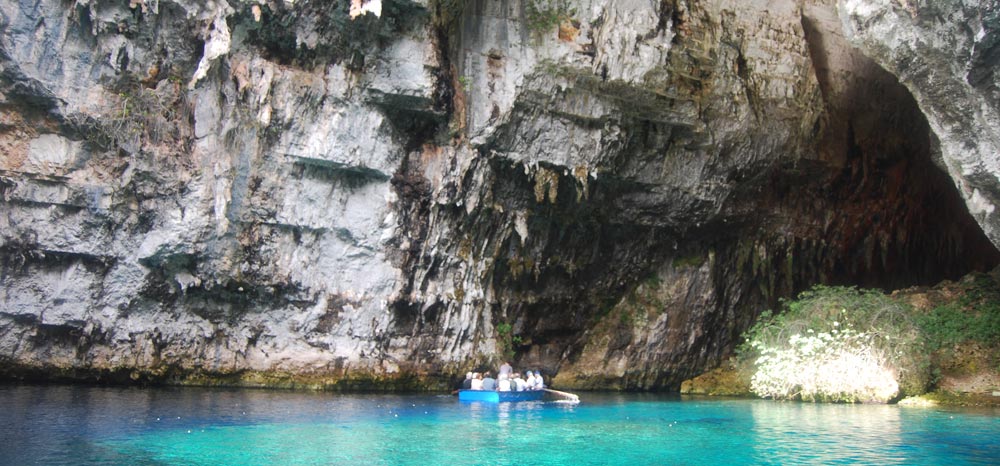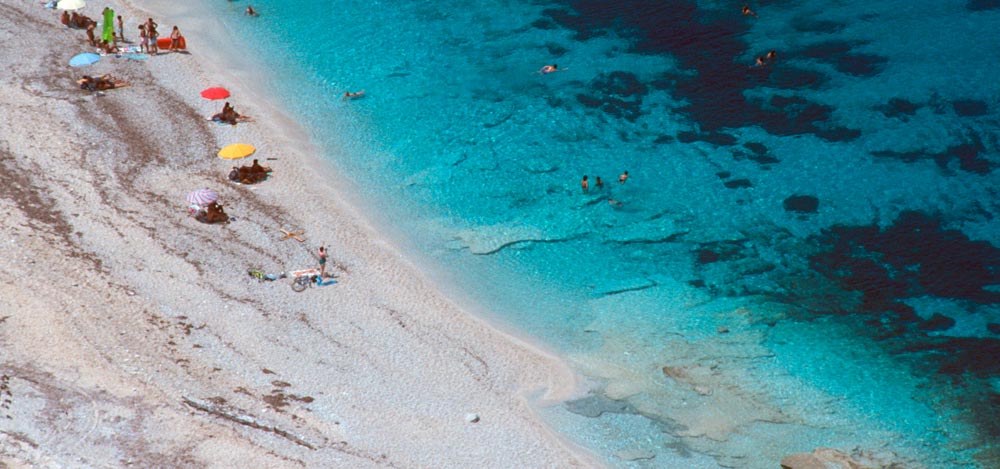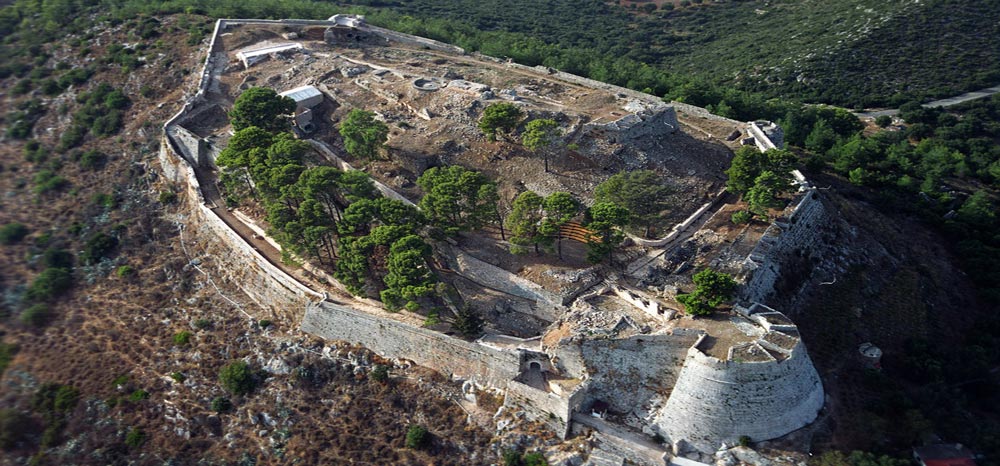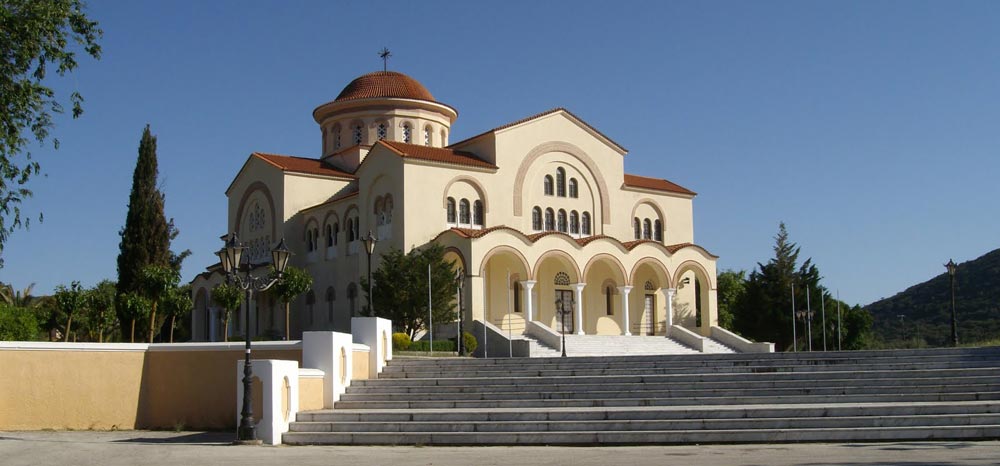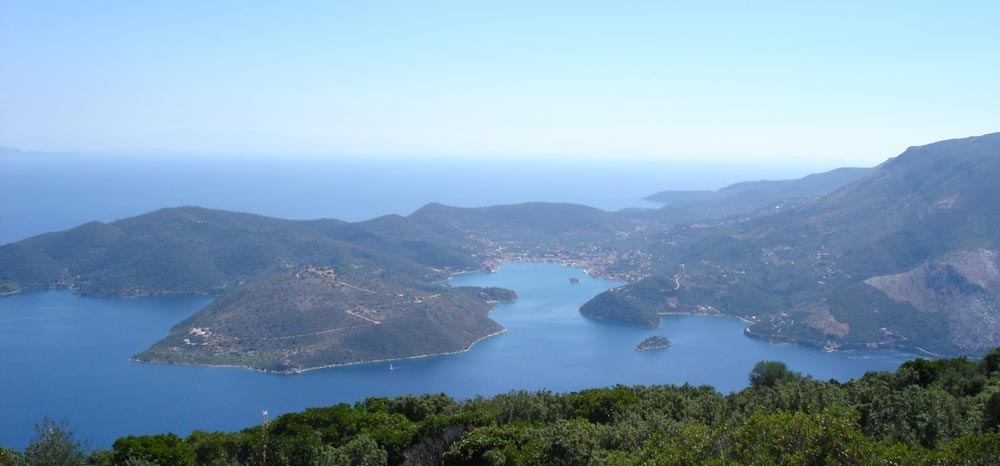Kefalonia, the biggest island of the Ionian Sea, has particularly interesting environment, historical, religious and cultural monuments, and very remarkable tourist infrastructure. Visitors can be sure that they will not be bored.
Argostoli is the capital and biggest city of the island. Wisely built in a natural port, protected from winds, it spreads beautifully to low verdant hills. At the edge of the bay, beside Argostoli, there is the lagoon of Koutavos, with wild vegetation and a forest with very tall eucalyptuses. Argostoli is a modern tourist city offering all amenities to visitors. Here, you shall find much sightseeing, museums, civil services, banks and transport to all areas of Kefalonia. On “Lithostroto”, which is a wonderful pedestrian area in the centre of the city, the heart of modern market beats. Here, you can go shopping and enjoy your coffee or drink in one of the many cafés. Besides, at the central square of the city, you will find any kind of shops, restaurants, a theatre, a cinema, bars and night clubs.
The most famous sightseeing of Argostoli includes:
- The Castle of Agios Georgios, the old capital of the island, which prevails in the bay of Argostoli. Despite its destruction by earthquakes, it remains impressive until today, and is a typical sample of the Venetian fortress craft.
- The Archaeological Museum, with remarkable ancient findings.
- The “Korgialenio” History Folk Museum, with a Library with historical records of Cephalonia.
- The Devosetou Bridge, a jewel of Argostoli, which connects the city with the other edge of the lagoon of Koutavos, on the path leading to north Kefalonia. In the middle of the bridge, the Kolona, a monument in honour of its constructors, prevails.
Other sightseeing of Cephalonia:
- The Monastery of Agios Gerasimos and the cave where he led his asceticism attract visitors from all over the world. Agios Gerasimos was born in 1506. He was an educated and wise globetrotter, a teacher of Orthodox faith. After he visited the most significant religious centres of his time (the Ecumenical Patriarchate of Istanbul, Mount Athos, where he became a monk, the Holy Land, Syria, Damascus, Sinai, Antiochea and Alexandria), he decided to establish a monastery in Kefalonia, near Argostoli, where he welcomed many worshippers who came to listen to his teaching. His fame spreads to the whole Christian world. After his death, his body has remained incorruptible, and the Church decided his canonisation in 1622.
- There are many sparse holy monasteries in Kefalonia, supporting the religious tourism. In the monastery of Panagia Markopoulou, small, harmless snakes with a small black cross on the head appear every 15th of August, and are a sign of good luck, according to the locals. In the Monastery of Agios Andreas, there is a Byzantine Ecclesiastical Museum. On the west coasts of Paliki, a magical location, there is the Kipouria monastery, with remarkable relics and post-Byzantine icons.
- The castle of Assos is another typical sample of the Venetian fortress craft. The view to the Ionian Sea from the one side, and the view to Assos from the other, which is build on the narrow strip of land that connects the land to the castle, is breathtaking.
- Impressive caves, underground and above ground, will excite you. In some of these, due to the powerful earthquakes, the top has fallen down, and special geological phenomena have been created, such as the Limnospilaio of Melissanthi. The tour in this cave is performed with small boats. In the centre of the lake, where the covered part of the cave starts, there is a small island, on which findings were found that prove the religious operation of the cave in ancient years. This is why the cave of Melissani is also called the Cave of Nymphs. Other caves also have wonderful decoration and excellent acoustics, such as Drogarati Cave, 3 kilometres away from Sami. Its depth reaches 95 metres, and its large central hall (of 60 Χ 40 Χ 20 metres) has been used for concerts. It is a living cave, as its creation still continues (drops fall everywhere from the stalagmites), and it is one of the most important caves in Greece. · Impressive mount Ainos,
- The National Forest of Kefalonia,
- The remarkable Museum of Natural History,
- The Katavothres, geological sightseeing, on the cape of Agioi Theodoroi. Here, the sea water is lost in openings on the land, and after it crosses the island through underwater passages, it reaches the cove of Sami, 30 kilometres away. In the past, the force of the water flow powered a watermill. Today, its huge wheel is sightseeing for the tourists of the area.
- The Graves of Mazarakaton. It is a Mycenaean Graveyard, 9 kilometres away from Argostoli, of great importance, as the graves were found unharmed, with great grave offerings that confirm the Homerian references regarding Kefalonia.
- The ancient theatre of Fiskardo, of the Roman era, of extraordinary beauty.
- The Fanari of Agioi Theodoroi, an impressive lighthouse of the 19th century, outside Argostoli, near the Katavothres.
Beaches
The embossed surface of the island has created wonderful beaches, the most famous of which are Miros and Xi.
- Mirtos is the most famous beach of Kefalonia and is included in the best and most famous beaches in the world. It has received international awards, and every summer, it is included in tourism articles as one of the most beautiful landscapes. The green of the area, the steep landscape, the white pebbles and the emerald waters of the Ionian Sea create a unique colour palette, which is different at the various times of the day, while the highlight is the sunset in the Ionian Sea. Mirtos is a fully organised beach with umbrellas, deck chairs, beach bars and other amenities, even for a day’s stay.
- The beach of Xi is located 8 kilometres away from Lixouri, on the south part of Kefalonia. It was named Xi because the cove where it is located looks like the letter Ξ (Xi) of the Greek Alphabet. What makes this beach unique is the extraordinary combination of colours (the deep red of the sand with the typical grey clay of the area). The beach of Xi is a cosmopolitan beach, very organised, with a rich market, rooms to let, beach bars and equipment for water sports. Its shallow waters make it ideal for children.
ACTIVITIES
- Swimming,
- Water sports, Windsurfing,
- Fishing,
- Underwater fishing, diving, water routes,
- Visits to churches and holy monasteries of the area,
- Walks,
- Biking,
- Gastronomy,
- Excursions,
- Speleology,
- Nightlife,
- Shopping.






